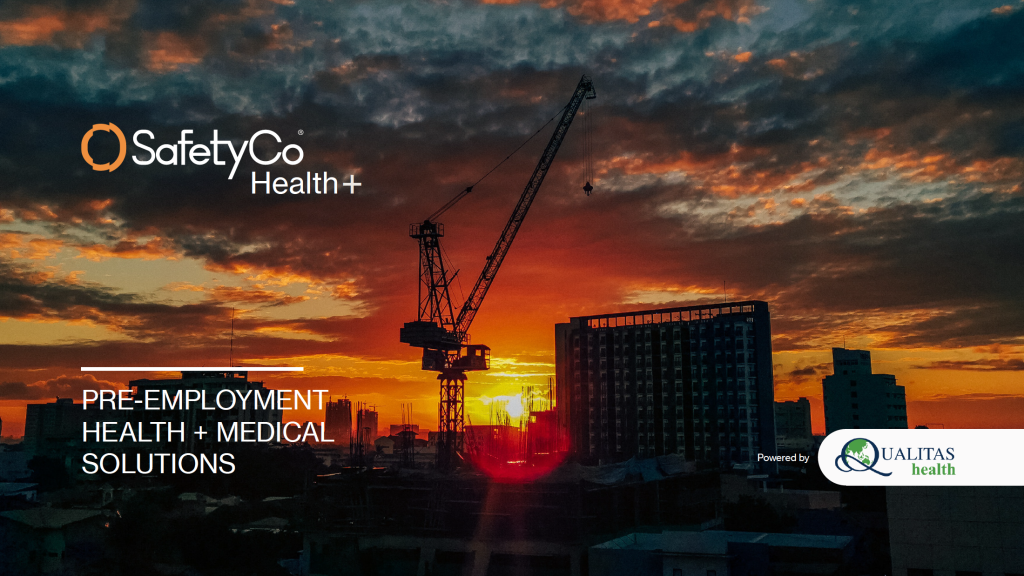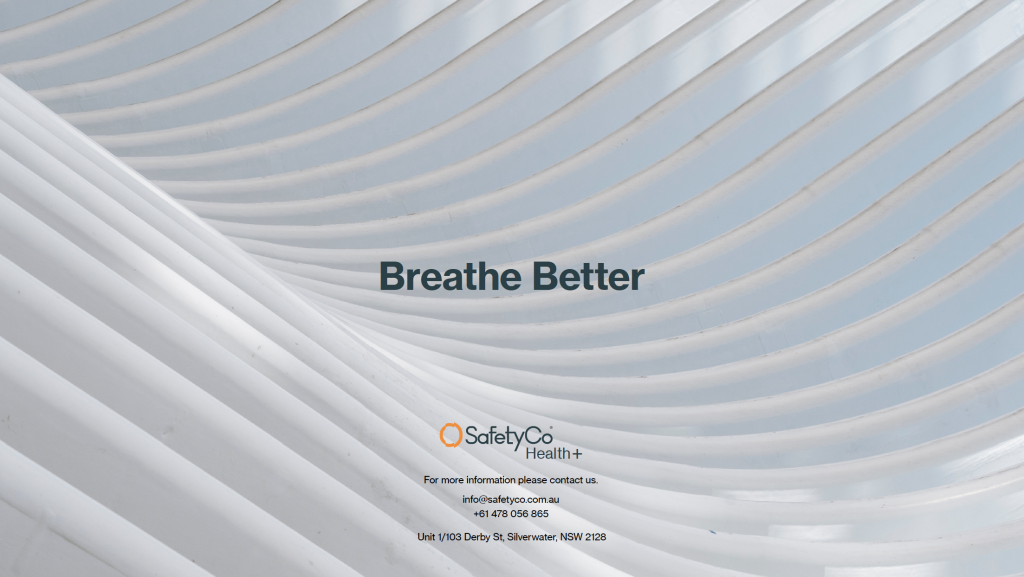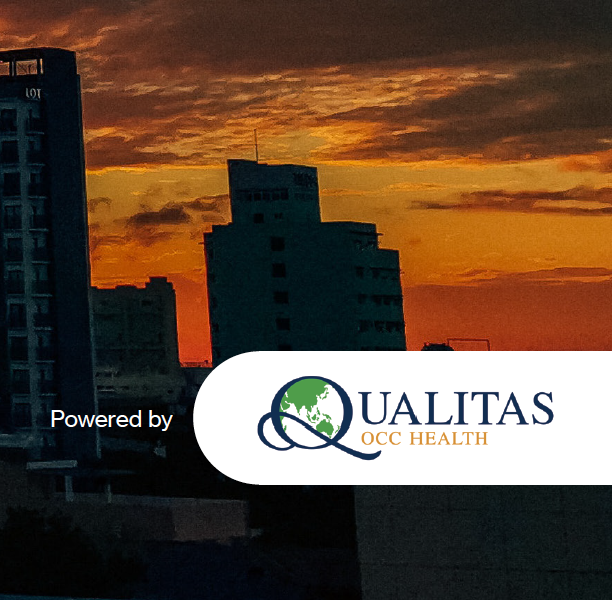SafetyCo is delighted to announce our partnership with Qualitas Health, a prominent healthcare provider in Australia. This collaboration marks an exciting step forward in our mission to enhance workplace safety and well-being, especially in the construction industry.
At SafetyCo, we understand that ensuring a skilled and healthy workforce is vital for the success of any industry. Our partnership with Qualitas Health allows us to leverage their expertise and resources in healthcare to pioneer the future of pre-employment checks. Together, we aim to establish a safer, more proficient, and compliant workforce in the construction sector. This partnership represents a commitment to excellence in safety and health, aligning perfectly with SafetyCo’s core values.
To find out more, you can download our health solutions document below:


There have been significant changes in pre-employment medical check requirements for construction workers in Australia, particularly focusing on the inclusion of screenings for skin cancer and silicosis. These changes represent a vital step forward in safeguarding worker health and enhancing industry safety standards.
The construction industry in Australia is renowned for its dynamic nature, which demands a highly skilled and healthy workforce. Recognising the evolving health risks faced by construction workers, authorities have made substantial changes to the pre-employment medical check requirements.
Previously, pre-employment medical checks primarily consisted of basic health assessments, focusing on general fitness and medical history. While these checks served a valuable purpose, they didn’t address specific risks prevalent in the construction sector. The increasing incidence of skin cancer in Australia has raised concerns, especially for outdoor workers like construction laborers. Prolonged sun exposure is a significant risk factor. Consequently, pre-employment medical checks now include skin cancer screenings to identify early signs of this disease.
Silicosis, a severe lung disease caused by exposure to silica dust from construction materials, has become a growing concern. The surge in silicosis cases among construction workers prompted authorities to introduce silicosis screenings in pre-employment medical checks.
The new pre-employment medical check requirements are significantly more demanding. In addition to the traditional assessments, they now include:
Although it has become more stringent these changes offer several benefits. Early detection of skin cancer and silicosis enables timely intervention, reducing the risk of severe health issues. We see improvement in industry compliance. Compliance with these new requirements ensures that construction companies adhere to health and safety regulations, reducing the risk of legal issues and fines. To help ease the transition and requirements, we at SafetyCo have partnered with Qualitas OCC Health to provide companies and their workers with a complete solution.
Australia’s construction industry is a key driver of economic growth. In this sector, safety, quality, and compliance are paramount. Pre-employment checks are vital for ensuring that the industry maintains these high standards.
Here are the reasons why pre-employment checks matter:
They are a mandatory requirement. They are essential for the safety, quality, and reputation of Australia’s construction industry. Investing in them is an investment in the industry’s future success.
Centralising pre-employment services in one place means:

We are thrilled about the prospects of this partnership and the positive impact it will have on workplace safety, quality control, and overall industry standards. Qualitas has the specialist expertise you need for all your pre-employment solutions. Qualitas OCC Health (QOH) is a premier providerof occupational health services and injury management solutions. Their mission since 1997 has been to assist in establishing a safer and healthier workforce by delivering high-quality occupational health services, returning injured workers to the workforce and to activities of daily living.
To combat and pre-empt the dangers on the job site we providea very wide range of services.
These include the following:
Injury management at work is crucial in several ways. Firstly, it prioritises the well-being of employees by ensuring prompt medical care and support for their recovery, reducing their suffering and the impact on their families. Secondly, it ensures compliance with Australian laws, avoiding fines and demonstrating ethical business practices. Moreover, it helps maintain workforce productivity and reduces the financial burdens associated with workplace injuries. Additionally, it boosts employee morale, enhances workplace safety, and aligns with social responsibility. Finally, it contributes to a positive corporate reputation, attracting and retaining talent in the long run.
In partnership with Qualitas Occ Health we provide specialised expertise for all of your workplace injury management solutions. Our experienced team have been managing specific work injuries, minimising lost time and guiding a timely recovery for over 25 years.
Qualitas’ team of experienced Medical and Allied Health Professionals is dedicated to providing a compassionate and ethical approach to the precise assessment of injuries, the development of tailored recovery plans, and the delivery of essential treatments. Through a collaborative team effort, focusing on a gradual return-to-work strategy and facilitating a return to pre-injury activities, employers can anticipate significant cost savings by minimising employee downtime. Moreover, this approach helps injured workers transition smoothly back into their roles, easing their reintegration into the workforce while ensuring their wellbeing and a successful return to productivity.
We specialise in workplace Injury Management and enhancing workers performance.

For more information on any of the above, please download our SafetyCo Health+ overview or contact us directly with your enquiry.